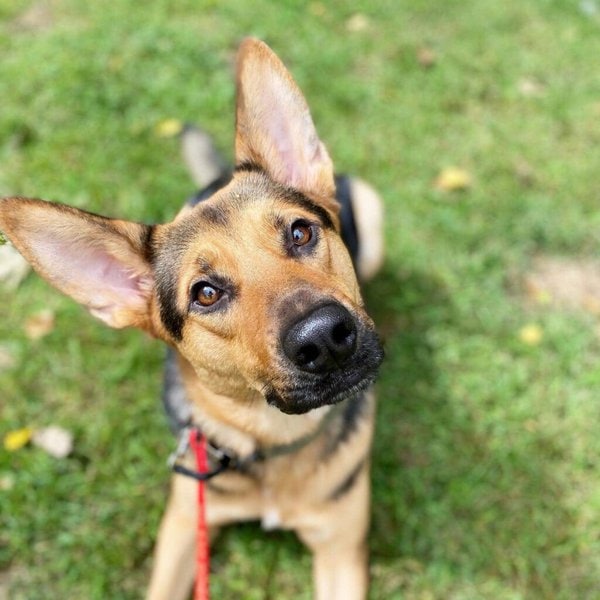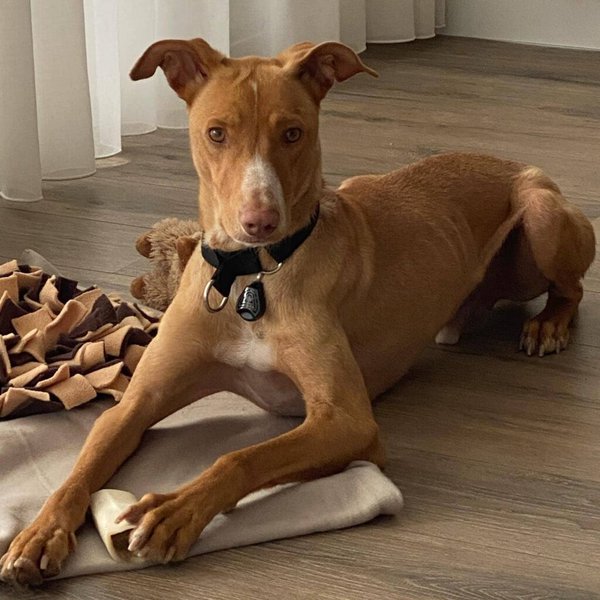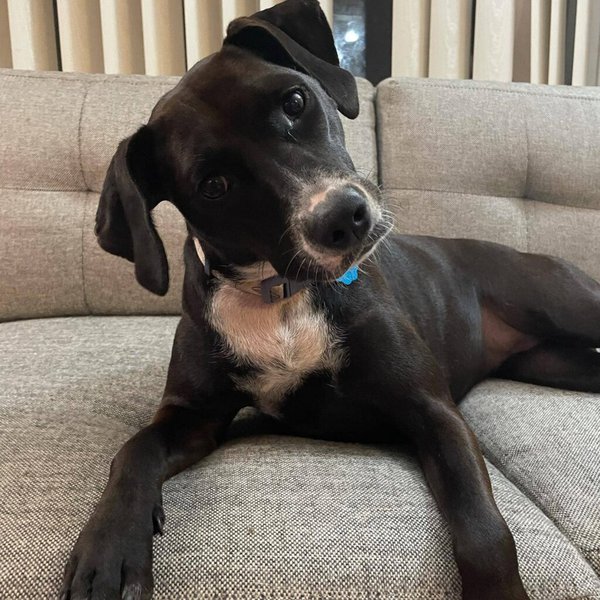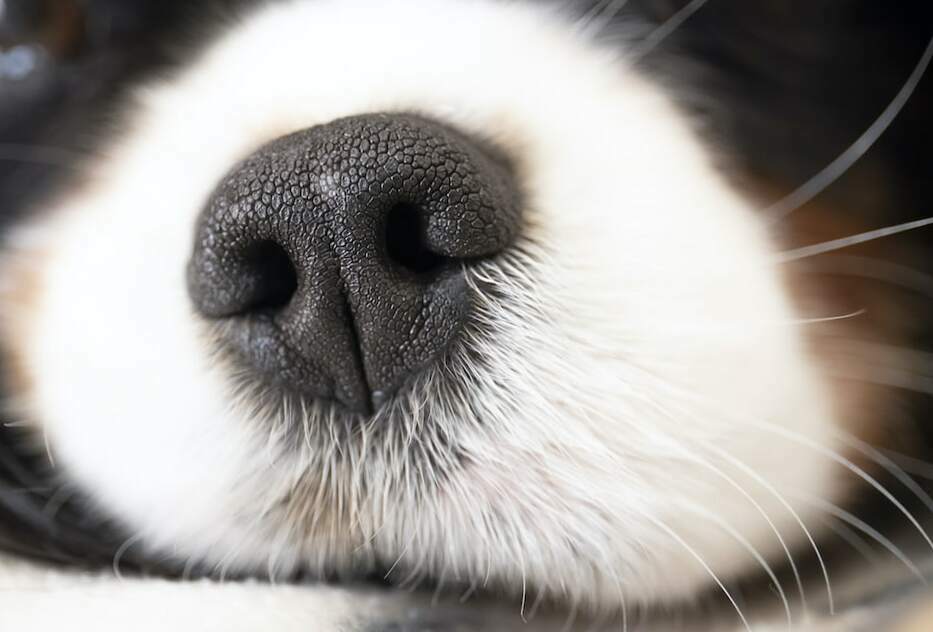We all know that dogs have a keen sense of smell with over 300 million receptor cells inside their noses compared to our 6 million. Dogs can sniff out all sorts of things and their brain can process odors 40 times better than ours. But is there anything more a dog can detect through its olfactory senses other than its search for food or prey?
Dogs can smell fear through their noses and will know the range of emotions we are feeling like humans. There are numerous studies claiming that dogs can smell or detect our emotions through the release of chemicals in our sweat glands and other parts of our bodies.
Fear is a human emotion that has an immediate effect on our physiology. Fear affects our nervous system which triggers the release of hormones that our dogs can sense.
In this article, we will focus specifically on how dogs can really smell fear in humans and how they behave or respond according to the scent we emit. We’d also touch on their behaviors when they themselves experience fear.
What Happens When Dogs Smell Fear?
When smelling fear, dogs can react negatively and show signs of aggressiveness by being more alert and guarded. Their reactions vary between different breeds when they sense that someone is fearful or nervous around them.
We can observe them with their eyes focused and directed at the fearful person. They may also expose their teeth or snarl, and bark if they sense that there is danger.
On the other hand, dogs that are properly socialized, tend to remain calm and change their demeanor towards people who are scared of them, especially children.
Some sensitive dogs are perceptive enough by slowly approaching people and bowing their heads as a sign that they are not aggressive.
How come dogs can smell human emotions, specifically if we are frightened? Will dogs bite if they sense fear? Let’s explore these issues further.

Can Dogs Smell Our Emotions?
Dogs receive emotional cues from humans through our sweat glands. It is not the emotions themselves that dogs smell but the hormones we release when experiencing either happiness or fear which are known as chemosignals.
The chemosignals we release through our armpit sweat glands is adrenaline, a hormone produced by our body when we are excited or stressed. Adrenaline is produced not only by our negative emotions, such as fear and stress, but also when we are happy. The difference lies in the number of hormones produced between these two emotions.
Researchers studied both Labrador Retrievers and Golden Retrievers to find out how they both respond to these chemosignals. Sweat samples were taken from strangers and their owners under three different emotional states, namely, fearful, happy, and neutral states, which produces no sweat at all.
The dogs’ heart rates were then measured and their corresponding behaviors like their stress levels were also observed.
The study revealed that when exposed to “positive” and neutral odors, the dogs exhibited a more friendly behavior towards the stranger and had lower heart rates.
When exposed to “negative” odors, the dogs had higher heart rates and showed stressful or aggressive behaviors associated with the fight or flight response.
They also tend to stay near their owners where it is safe and are much more hesitant to approach the stranger.
It is therefore concluded that interspecies communication between dogs and humans occurs through chemosignals. The odors we emit are directly linked to the emotions of our furry pets.
Will Dogs Bite If They Sense Fear?
Yes, when dogs sense fears in people, they view this as a stressful situation. This triggers them to bite or be aggressive, especially if they are not properly socialized and exposed to various environments.
Aggressive behavior can also be a manifestation of their instinct to eliminate weaker members of their pack. When you find yourself scared in the presence of aggressive dogs, it is best to remain calm and still. Running or backing away suddenly may force them to chase and attack.
In addition, staring directly at an unfamiliar dog and yelling at it can also make a dog feel that you are invading its territory.
Why Do Dogs Bite When They Are Scared?
While there are many reasons why dogs bite, some of them can show hostile behavior when they are scared. This hostile behavior manifests itself when they think that the only way to escape a stressful or scary situation is by biting their way out of it. It is a form of self-defense and triggers their fight-or-flight response by lashing out with their teeth.
Dogs that typically exhibit fear aggression were often not properly socialized as a puppy and that their genetics or living environments could also play a role. Some rescue dogs display fear biting since a lot of them were not properly taken care of and felt insecure due to abandonment.
Puppies that were never exposed or had limited exposure to other dogs when they were young typically never learn the rules of play-bite among dogs. They do not know that inhibiting the strength of their bites is part of friendly interaction and they never learn how to hold back.
These dogs usually got hurt on their first fight because of play aggression and learned early on that biting is the only means of escape.

Why Does My Dog Bite Me When Scared?
There may be several reasons why your scared dog can have bitten you, as well as other people and animals.
One is that it thinks its personal space is being violated. Fear aggressive dogs tend to feel trapped and uncomfortable when people bend over them to pet or hug them. They also want to maintain a certain distance from other animals and people. If they get too close, they may attack to defend its space with growls and bites.
Second, your dog is threatened when you or somebody approaches it when it is hiding in a confined space like under a table or bed or even inside its cage. Your dog considers this area as its haven from the commotion around.
Third, sudden movements of people around your dog and loud noises can also set off its fear aggression. Fireworks, thunder, whirring vacuums, or startling police sirens can cause anxiety and fear.
Lastly, scary situations the dog experienced in the past may also trigger fear like a negative experience in the veterinary or grooming clinic or an untoward incident in the park.
What Are The Signs Of Fear Aggression?
When dogs show signs of displacement behaviors like yawning when they are not tired or scratching without any apparent reason, they can be stressed or scared. This is their way of deflecting their desires because of fear.
When they are threatened, they may also widen their eyes showing the white part of the eyes known as a whale eye. This can also be accompanied by facial tension and a closed mouth. One should be careful when they notice this since the dog can suddenly lunge and bite you.
Scared or startled dogs can also empty their anal sacs by accidentally spraying or shooting the sebaceous fluid that smells like rotten fish. This is not a protective measure on their part but rather an involuntary contraction of the anal muscles.
Can You Fix A Fear Aggressive Dog?
Yes, there are several things you can do to fix your dog’s fear aggressive behavior. It is important to recognize what is causing your dog to react with fear.
The things that you can do to cure fear aggression are: maintain a cool demeanor, observe your dog’s body language, proper socialization, and avoid aggressive crating.
Maintain A Cool Demeanor
Keep your cool. Never punish your dog by hitting or yelling at him or even staring hard at him. This will just exacerbate its fear and create more aggressive behaviors.
Remember that your dog is scared and should be dealt with a calm voice. A gentle voice will show your dog that you are on top of the situation and have no need to worry.
Be Observant
Observe your dog’s body language. If you see signs that your dog feels anxious and scared in a particular environment, by cowering or being aloof, it is best to distance it from the situation.
You can also try calming it down by yawning or glancing away because in the eyes of your dog, these actions are appeasing gestures that are non-threatening.
It also goes a long, long way knowing your dog’s peculiarities, say, what are its likes and dislikes. Find your dog’s comfort zone regarding stressful situations. If it appears to be anxious around new people, place your dog in a separate room with some treats and toys to make it feel comfortable.

Socialization
Socialize your dog slowly. Introduce your dog to other dogs and people with care. Scared or shy dogs usually prefer to keep their distance from other dogs, and they need that space to feel safe.
Always use positive reinforcements like training treats and toys when your dog shows improvements in dealing with its fear.
Aggressive Caging
Avoid aggressive caging or crating. Do not push your dog into a cage when it is being aggressive since it will think it is being punished. Let your dog enter the cage on its own volition by luring it with toys and treats.
Consult your veterinarian or trainer. Your vet may recommend over-the-counter anti-anxiety products or a positive reinforcement trainer can help modify your dog’s behavior. Knowing the cause of your dog’s fear, be it physical or mental, will go a long way in helping your dog resolve its fear.
Should I Get Rid Of My Fear Aggressive Dog?
Every dog needs a forever home, but sometimes certain situations can make it difficult for some owners to take care of a dog properly.
If you find that you cannot handle a fear aggressive dog because it is biting you often, then it may be a good idea to find a better home for your dog.
Remember that rehoming is a very stressful situation to dogs, with aggressive behavioral outbursts and depression being the possible outcomes. To reduce the impact of separation from your dog, it is best to check with local animal shelters that offer pet-friendly housing and practice humane treatments for dogs in need of new homes.





